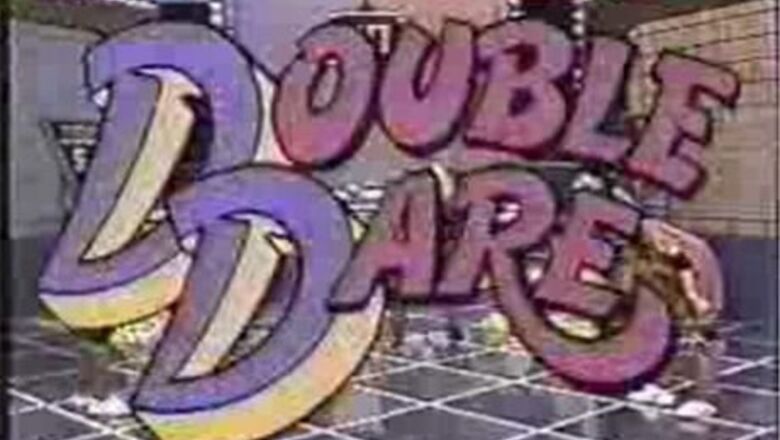
views
Watching the Show

Understand the general make-up of the "On Your Mark" toss-up game. The show would always begin with the host beginning a physical challenge-like game before the opening credits. The host would begin the show with the words "On your mark...get set...Go!!!!" then a game would be played and the narrator would give viewers the On Your Mark game directions. Each game was different, and no game was timed (most were completed after one or two minutes).Once the judges felt that one team completed the challenge, a ding would sound and the game ended; the teams would towel off and head up to the team podium (as the splash-like title pane would appear on the viewer's screen.) The winner of this game would gain control of answering questions once the host wrapped up introducing both teams. On later versions of the show, teams would get points for winning the On Your Mark challenge, but not on Double Dare itself. Sometimes, players had to fill a beaker of water containing a large yellow line or toss several props across a line to another player on stage with several different games.
Learn about the Double Dare introductions. The host would introduce both teams (both containing anywhere from 2 players (for Double Dare and Super Sloppy Double Dare) or 4-5 (Family Double Dare, Double Dare 2000 or the All New Double Dare), and they'd go over the simplified version of the well-rehearsed rules onstage and never changed. The host would say: "I'm going to ask you a question. If you don't know the answer, or think the other team hasn't got a clue, you can dare them to answer it for double the dollars. But, be careful, because they can always double dare you back for four times the amount, and then you either have to answer that question or take the physical challenge," then the first question was asked.
Learn about Double Dare's Question rounds. Questions were asked. Some were multiple choice (containing either True/False) or three choices of free-answer, while some didn't contain any and were answered easily. Questions were randomized and could be on any subject. This team - like the directions said - either answered or dared. If it was dared, the receiving team thought about the answer to the question (after the host re-asked the question), who could either answer it or they could say "Double Dare" to pass it back to the other team. The passing team (who originally dared) received the question on a double dare, who could either answer the question or say "Physical Challenge" to choose to complete a physical task nearby. Control of the question was dependent on the correct answer or successful completion of the Physical Challenge for the previous question. Correct answers kept possession of other questions on their side. Incorrect answers passed possession to the opposing team. The first round of questions generally lasted about ten minutes and always concluded with an advertisement break.
Find out what happened and how play-styles changed after the advertisement break. For this On Your Mark, the host mentioned the directions and the game began. After the advertisement, another On Your Mark toss-up round was played, but answer values were doubled. Runtime generally was shorter at 5-8 minutes - so not by much. Winner was determined with the most points (Double Dare) or dollars (Super Sloppy Double Dare, Family Double Dare, Double Dare 2000, The All New Double Dare), while the losers would go home with consolation prizes and the satisfaction that they tried. Buzzing would be heard at the end of the game, and the host would explain it's reason. "That sound means it's the end of the game. With # of (points/money), the (Team name or color) have won the game and now have the right to go for the Obstacle Course." Another break would be shown as it would show the splash screen.
Understand the objective of a Physical Challenge. Although Physical Challenges varied, the participants were involved in a 15-30 or 30-45 second challenge testing physical or muscular strength. They were popular for their simplicity and comedy of the event and messes they created. However, they varied by episode and season. During Double Dare, there were several. Among the most popular included Pie in the Face (where players were throwing pies at a target), Egg Toss (where players tossed raw eggs between players trying to catch without breaking them), Balloon Pop (players had to sit on, stomp or squeeze balloons), Ping Pong Blow (where players blew ping pong balls into a cup or target using their breath), and the famous Dizzy Bat (players spun around a baseball bat to get dizzy then play tasks like running or carrying an object). Physical challenges during each different iteration season for this show into Super Sloppy Double Dare, Family Double Dare, Double Dare 2000, and The All New Double Dare brought different challenges to complete and varied in intensity. Although challenges were testing backstage with little to no trouble, hosts were seen and heard mentioning that these reality check challenges performed in the spotlight weren't always that easy and didn't always go as planned as they were when they were trialed. During Double Dare 2000, the second round of questions' physical challenges most often imposed a Triple Dare Challenge. Although the physical challenge teams wouldn't know what they'd be doing to win additional money (for the Triple Dare Challenge) on top when they accepted or declined the challenge, they could win triple the money for the event - but had to do extra work to complete their Physical Challenge. (In one such example of a Triple Dare Challenge, the physical challenge involved the players stacking large styrofoam blocks in the form of a cake. However, their Triple Dare Challenge would involve adding another block and a liquidy "frosting" and cherry - all within the same amount of time.)
Learn about the scoring system during the question rounds. Players would win money for correctly answering the questions, completing a physical challenge, or toss-up round activity. During Double Dare and Super Sloppy Double Dare, initial amounts began at 10 points. They escalated to 20 on a Dare and 40 on a Double Dare. During Family Double Dare and Double Dare 2000, questions would be worth $25, $50 on a Dare, and $100 on a Double Dare. In Double Dare 2000, questions would also be worth $25, $50 on a Dare and $100 on a Double Dare, but the Triple Dare Challenge would net the team an additional $100 if they accepted and completed the challenge successfully. On the All-New Double Dare, questions started at $50 then escalated to $100 on a Dare and $200 on a Double Dare, but later, these were changed back to points.
Understand the Obstacle Course. Eight obstacles were set up on the floor just outside of the Question round area onstage. Grabbing a red, numbered flag hanging either within the obstacle or on a pole outside the obstacle, teams would collect prizes for each obstacle they completed - all within sixty seconds. The grand prize was a trip to someplace. Games differed between the seasons used. Teammates would change between the obstacles. By the time Family Double Dare, Double Dare 2000, and New Double Dare's later episodes showed up, each teammate would play in a repetitious cycle of every four obstacles.
Learn about the obstacles that were used. Kids always dreamed of Sundae Slide, which would see players go up a flight of stairs then be forced to slide back down into a whipped cream "goo" at the bottom, then reach up for the flag. In others ("Pick It"/"(In) Da Nose"), players would have to reach up into a giant nostril onstage to find the flag - but watch out because sometimes this nose would sneeze out the flag. In The Gum Drop, players would climb into a giant gumdrop machine and grab the flag inside sticky syrup near the bottom. With One Ton Hamster Wheel, players had to run a hamster wheel to move it and reveal the flag, coming down from a giant arm. Contestants were turned into hamsters. A wheel was placed on the stage, and the contestant would walk this wheel, lighting up a scorecard on the side, and upon completion, would drop the flag from a flagpole. (The Wheel was later used in the Wheel Room of Legends of the Hidden Temple (but repainted in black paint, and the flagpole was removed) .) In The Wringer, players squeezed through two large foam rollers to get to the flag at the other side. Contestants would be cranked through a wringer filled with gak and would find the flag about halfway down the Obstacle. In the Soda Jerk, players pumped levers to fake soda bottles shake and explode to reveal the flag. In Mount Saint Double Dare, players climbed a foam-covered mountain to reach the flag. In The Pillow Fight, players had to search for the flag after breaking into a giant pillow. However, an oversight by crew was discovered for the very first episode's Obstacle Course, as through the first two run-throughs of this obstacle, no flag was put into the pillow. In some of the original Double Dare's spin-offs, additional popular challenges included: Down the Hatch would have its contestants open a giant mouth's pair of teeth, slide down a short slide into goo, and then reach for the flag. "In One Ear" would get the contestant to walk through a giant head prop from one ear to the other, watching out for "earwax." In "The Tank," participants ended up going through a swimming pool holding water and/or balls/balloons - and the participants had to cross this pool to find the flag. In "Kid Farm"/"Ant Farm," contestants crawled around a kid-size ant farm. In "Kid Wash," contestant kids were sprayed with water "Car Wash" style as the contestants walked through the event. Others had foam feet "stomping" (more like "bumping by feel") on the contestant but were not seen quite as often. Peanut Butter and Jelly showed teams navigating through large pillow-like slices of peanut butter and jelly-smeared "bread" to find the flag.
Recognize what the team would win as prizes in the Obstacle Course. Each Obstacle Course came along with a great prize. No matter if the team got the grand prize or not, teams would get to keep each Obstacle Course prize they completed/won. These prizes ranged from small karaoke machines to other knick-knacks. However, these prizes varied from episode to episode and ultimately changed for each Double Dare iteration. The grand prize went to the team who solved every obstacle - and generally would be for NASA Space Camp. In subsequent iterations, trips back to Universal Studios Florida were used, and many were vacations to other destinations. or a new trip back to Universal Studios Florida (as it was previously known). During the taping of Double Dare at Universal Studios in Orlando, FL, having a final prize with a trip back to this park was a letdown to most of these contestant teams. Teams would try out at the beginning of the day after entering the park and expect bigger "vacations" elsewhere for the emotional pain/anguish.
Other Facts
Recognize what the players wore during the show. Teams would wear a free (either red or blue depending on the team color) T-shirt stamped with the version of Double Dare's logo on the front. Teams wore either Reebok or Nike sneakers that the show provided to each team - and were based on the current sneaker trends of that year. While the blue team would stand to the host's right, the red team would stand to the host's left. First-season contestants wore all-red shirts, but due to a dispute for the second year, teams got two different colors to prevent confusion.
Watch the makeup of the teams. On Double Dare and Super Sloppy Double Dare, teams were composed of 2 players - 2 kids. On Family Double Dare and Double Dare 2000, a family of 4 players composed the team. By the time the All-New Double Dare came on in 2018, teams had begun as 2 players but ventured out into 4 players after sometimes having a few guest star adults play with the one kid contestant, then arrived at 4 players towards the end of the first season of that show - where it's stayed ever since.
Learn about the nicknames given to the teams. Teams would be given a team name based on the teams providing stagehands and crewmembers backstage from their team applications.
Look for the makeup of the Double Dare stages. Long podiums stood on both sides of the stage for each team's contestants. You'd see a towel bar with team towels to dry off after a Physical or On Your Mark challenge. Above the player podium and unattached to the team desks would be the teams' digital scoreboards based on the team color. Between the two teams, the host's desk would be shown. This desk would replicate the desks of the players in color and design without the scoreboard. Above the host, you'd see a board that would revolve depending on the need for a physical challenge - which was the stopwatch board for the challenge. Physical challenges and toss-up questions were completed over the floor in front of the team desks. This area's floor had a blue checkerboard pattern with greyish-yellow lines over about a quarter of the width of a given football field, with an engrained yellow line being shown for markings of where contestants couldn't cross (if required by the challenge). These floors were spotless but could become wet and messy during the challenge. The stage crew cleaned it up till it was spotless and dry - all without ever being noticed on camera. (Those in the audience watched as they worked off-camera.) Two stairs were seen between the Physical Challenge and Obstacle Course areas, which would allow the contestants to move freely from one section to the other when the camera wasn't focused on them. These stairs weren't used in any event but were the go-between for these events between takes. Look for the Obstacle Course area set up on the white floor out front of those stairs. In this area, eight obstacles would be set up on the floor and ready for use during the Obstacle Course. With randomness, you'd sometimes see the area for the recording equipment from this area close to the audience. But sometimes, it would be a bit blurred and unseen. The camera equipment was based on the obstacle course floor when the show had its question and On Your Mark rounds. However, by the time the Obstacle Course happened, multiple cameras were used and placed at various pivot points near each Obstacle, so the view was never impeded. Onto the side and back walls, you'd see three viewer seat areas, as these shows were taped "under a Live Studio Audience." However, during the All-New Double Dare (2018), off to the right side of the screen, you could spot the narrator's position onscreen.
See how the stage makeup differed when it came to different versions after Double Dare and Super Sloppy Double Dare. During Family Double Dare and Double Dare 2000, each of these scoreboards had rounded corners, and each portion of the backdrop of each number would be set on a black background. On the All-New Double Dare, things dropped back to a simpler time with triangular boards with black backgrounds with the team color around them. Above this, the team name would be seen rather prominently.
Learn about the logo on the plaque on the hosts' desk. It had the picturesque icon of Double Dare's interconnected D's name on a placard at the center-most portion of the host desk. During the All-New Double Dare, the host would stand at this desk, and you'd see the time board prominently displayed. The time board was large and filled the remainder of the screen in the back of the host. It was technological, and every time a team dared or double-dared, the screen would display this on the board. You could spot if the team was taking the physical challenge in the splash-screen-like display if you looked closely.
Recognize the hosts for this show. During Double Dare, Super Sloppy Double Dare, and Family Double Dare, a host named Marc Summers starred. When Double Dare 2000 came out, the little-known Jason Harris took over hosting duties. By the entry of the All-New Double Dare, Liza Koshy (of YouTube fame) was brought in instead and paired with the helping narrator Marc Summers. Marc Summers had a very wild resume of game show hosting jobs. He self-hosted the whole run of Double Dare, Super Sloppy Double Dare, and Family Double Dare. Still, by the time the All-New Double Dare came out in 2018, he was the narrator of the show (except for the one where Liza "lost her voice and couldn't host the remainder of the episode." He also hosted all episodes of the later Nickelodeon hit "What Would You Do?" and even made Food Network's series "Unwrapped" become a household name.
Watch and understand the stagehands. These stagehands helped set up, prepare, and clean the stage during and after On Your Mark and Physical Challenges. Although the host just referred to his helpers by their first or nickname, Robin (Robin Marella) was often his "best friend forever" on these shows and gave him help when needed. Others were there to help clean the stage named Dave Shikiar (1986-1990), Jamie Bojanowski, and Chris Miles but were changed entirely for Double Dare 2000 all without being seen on camera. During the All-New Double Dare in 2018, these stagehands consisted of several people but rather commonly changed jobs, with Robin Russo being the stage manager who managed the challenges and obstacles.
Recognize the narrator of the show. As you watch both Double Dare and Super Sloppy Double Dare, you'll get to know John "Harvey". Sometimes, Harvey was seen on camera but was seen grabbing kids out of the audience. He'd sometimes demonstrate Obstacles himself, but most often it was the kids who appeared more than Harvey. It was Harvey's voice that made this show's narrator spot popular. During this guest's appearance, they'd often obtain brand new Reebok sneakers for their participation, as well as a clean pair of clothes and a special participant guest T-shirt. Tiffany Phillips took over for Double Dare 2000. Marc Summers took over narration for the All-New Double Dare.
Recognize the TV network that brought the viewer Double Dare. Nickelodeon brought Double Dare to air during a programming block between four and five o'clock pm (Eastern Time) - showing a total of 592 episodes over the course of 4 renditions of the show. (525 of which aired as either Double Dare (10/6/1986 - 2/19/1988), Super Sloppy Double Dare (10/6/1986 - 2/19/1988, daily), or Family Double Dare (8/13/1990 - 2/6/1993)). Super Sloppy Double Dare ran daily episodes, but Double Dare's episodes generally aired only on Saturday nights on Nickelodeon with airings of Double Dare 2000 between 1/22/2000 and 11/10/2000. When Double Dare 2000 was being re-aired on TeenNick, Double Dare was 35 minutes long and considered for the additional TV advertisements. During the All-New Double Dare, these shows were shown during the 8-8:30 pm and 8:30-9 pm blocks on Nickelodeon but were later moved to TeenNick having shown new ones from time to time, during various times of the day. Now, these are primarily shown on a variety of Nickelodeon-based sub-channels at various times of day set on a random schedule.
Recognize where else this name of the show was aired. The Double Dare name was used in a FOX Family Channel run in the 1990s and was seen with a different host. The point and money structure were changed during this version, as was the floorspace setup. CBS also aired a game show by the same name in the 1980s but it was completely different and hosted by a very young Alex Trebek.
Be able to sing the main game music in your mind once you hear it a few times. (If you were an avid fan back then, you'll probably still remember the music from back then as you are reading this article.) Wait for the music used from the introductory credits and the theme music from the obstacle course (prize introduction segue) and prizes sections. This game theme music was called "On Your Mark," and any fan of this show will remember it from memory, though Double Dare 2000 had a revised edition of this song used during its run, and as of the All-New Double Dare is still being used and trademarked.
Recognize the special airings of this show. Parts of Double Dare were seen during the Big Help's episodes on October 3, 1994. Three episodes' games modeled those of Double Dare's On Your Mark games - two of which modeled the William Tell games. "William Tell" instructed players to launch toilet plungers at a special plexiglass wall/window to hit a buzzer to complete the game. Pies in Your Pants involved a pair of team members catapulting shaving cream pies into another player's pair of oversized pants. Rubber Baby Bungee Jumpers had players jumping up and down in "diaper-like" pants pairs with a pin on the bottom onto a bunch of balloons from a bungee attached to the ceiling. These balloons held a liquid, and the first team to pop enough balloons with liquid to fill a container won.











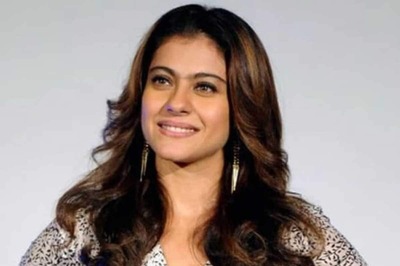

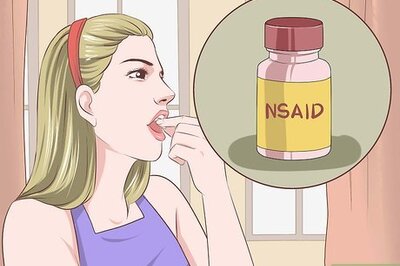
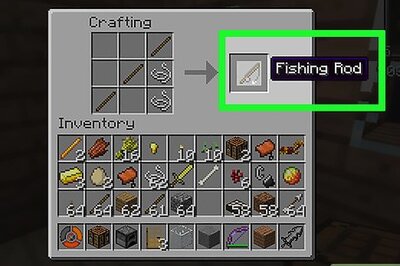
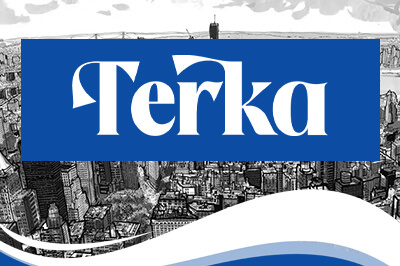
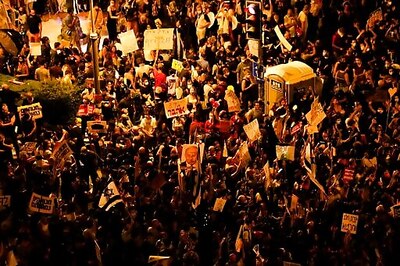
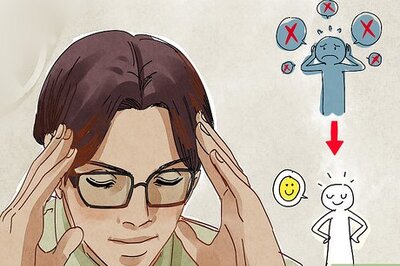


Comments
0 comment